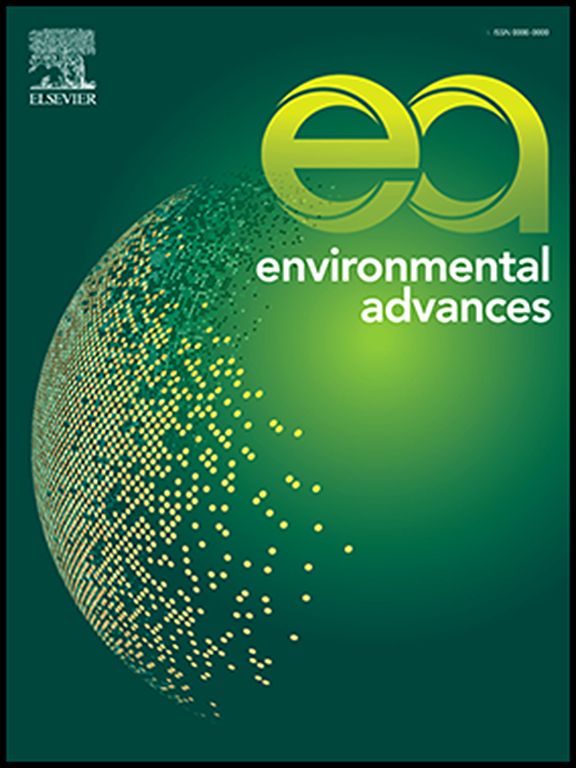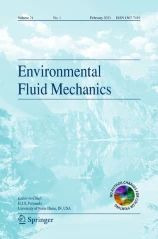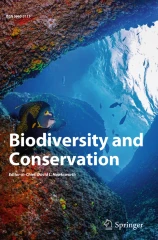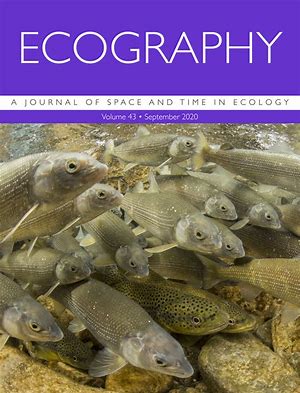Please find all scientific publications of IGB under > scientific publications
For more detailed information please refer to our > library catalogue
151 - 160 of 739 items
March 2025
Ecography. - 2025(2025)7, Art. e07725
Determinants of species' centrality in spatially-connected plant-frugivore networks
Lucas P. Martins; Daniel B. Stouffer; Carine Emer; Mauro Galetti; Marco Aurélio Pizo; Fernanda Ribeiro da Silva; Jason M. Tylianakis

March 2025
Environmental Advances. - 19(2025), Art. 100622
Abiotic reductive dehalogenation of pharmaceuticals with naturally occurring redox mediators
Kerstin Gerundt; Jörg Lewandowski; Anke Putschew

March 2025
Environmental Fluid Mechanics. - 25(2019)16, XX-XX
Three-dimensional modeling of diffusion-gravity flows in ice-covered lakes
Fatemeh Sadat Sharifi; Reinhard Hinkelmann; Tore Hattermann; Georgiy Kirillin

March 2025
Environmental Science & Technology. - 59(2025)9, 4674–4683
Importance of Attachment Efficiency in Determining the Fate of PS and PVC Nanoplastic Heteroaggregation with Natural Colloids Using a Multimedia Model
Fazel Abdolahpur Monikh; Joris T. K. Quik; Mark R. Wiesner; Andrea Tapparo; Paolo Pastore; Hans-Peter Grossart; Jarkko Akkanen; Raine Kortet; Jussi V.K. Kukkonen

March 2025
Biodiversity and Conservation. - 34(2025), 1833–1855
Rare fish species in European lakes – patterns and processes
Thomas Mehner; Christine Argillier; Teresa Ferreira; Kerstin Holmgren; Erik Jeppesen; Fiona Kelly; Teet Krause; Mikko Olin; Pietro Volta; Ian J. Winfield; Sandra Brucet

March 2025
Agricultural and Forest Meteorology. - 365(2025), Art. 110467
Does high resolution in situ xylem and atmospheric vapor isotope data help improve modeled estimates of ecohydrological partitioning?
Christian Birkel; Dörthe Tetzlaff; Ann-Marie Ring; Chris Soulsby

February 2025
NeoBiota. - 97(2025), S. 301-318
Food fight: Gammarus tigrinus demonstrate competitive advantage over native G. duebeni
James W. E. Dickey; Julian W. Zeller; Elizabeta Briski; Jonathan M. Jeschke; Gareth Arnott

February 2025
Environmental Science and Pollution Research. - 32(2025), 6784–6803
Spatial distribution of nicotine concentrations in Berlin’s surface waters and their potential sources
Markus Venohr; Christine Beusch; Tobias Goldhammer; Hanh Hong Nguyen; Simone Podschun; Claudia Schmalsch; Christian Wolter
February 2025
Journal of Applied Ecology. - 62(2025)4, 1052-1062
The crucial role of ecohydraulic factors in triggering sturgeon reproduction: Implications for active habitat restoration strategies in the Yangtze River
Hao Du; Xuan Ban; Pengcheng Li; Wurong Shih; Panayiotis Diplas; Jinming Wu; Junyi Li; Peilin Cheng; Pengsheng Li; Wencheng Liu; Fengzhi He

February 2025
International Biodeterioration & Biodegradation. - 199(2025), Art. 106031
Improving bioavailability of lignocellulosic biomass by pretreatment with the marine fungus Chaetomium sp. CS1
Minghuang Ling; Ping Zheng; Xiaomei Huang; Gaili Fan; Huafeng Zhang; Zhijie Xu; Peiwen Zhuang; Changyou Wang; Hans-Peter Grossart; Kai Zhang; Zhuhua Luo



